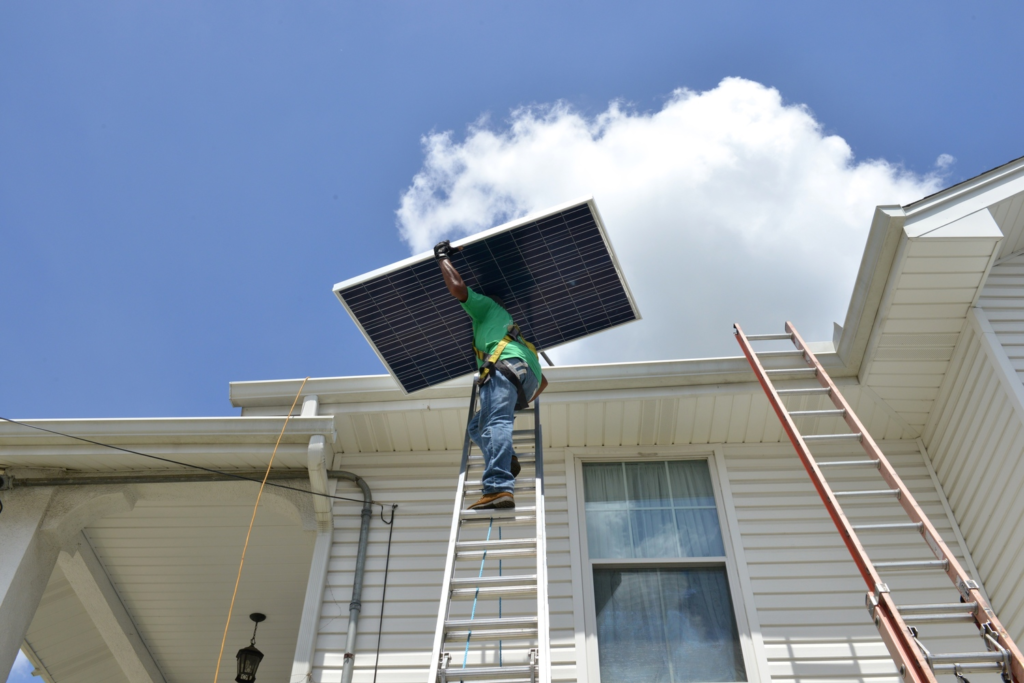
Aligning Business And Values
Aligning Business And Values
A father of the social investment movement reflects on decades in the field, and the ongoing promise of changing the world through responsible financial choices.
Some 35 years ago, I co-founded Calvert Social Investment Fund, the nation’s first socially responsible mutual fund. To this day, people ask what inspired me to join what would soon evolve into the impact/social investing movement. It certainly wasn’t my studies at the Wharton School, where Donald Trump was a classmate—though being at the University of Pennsylvania in the late ‘60s did shape ideals and aspirations for many in that baby boom generation. In today’s era of divided and dysfunctional politics, perhaps this story can inspire younger generations with a simple truth: That a core vision combined with grassroots efforts can still actually change the world.
My personal journey unfolded by attending a post-hippie conference in the late ‘70s where the theme was “Right Livelihood”, a Buddhist concept on how to live a proper life. At the age of 27, and just out of Georgetown Law, I had helped launch the Calvert Group, which was soon Washington’s largest money market fund and the highest-yielding money fund in the nation. At this stratospheric moment in my career, I imagined my gravesite epitaph would be that I earned 0.20% more for our investors than others. Somehow, this tombstone claim didn’t sit well with me.
After much rumination and soul searching, I convinced my partner we should create a fund that represented the values of our generation. We devised a range of investment criteria, or screens, like environment and labor issues, product quality, and not doing business with those supporting South Africa’s apartheid regime. Along with our social screens, we were the first fund to file with the Securities and Exchange Commission (SEC) a prospectus that ensured we would invest 1% of the monies at a below-market return to advance issues of social justice.
We also carved out some monies (in what is today our Special Equities impact portfolio) to do venture investing in small companies that represented the kind of future enterprises we wanted to create. This vision attracted and was shaped by many social activists of the day who had not previously seen the financial sphere as a point of leverage for cultural change. Our Advisory Council included people like energy guru Amory Lovins, solar age evangelist Hazel Henderson, wellness publisher Robert Rodale, and nuclear activist Grace Sannino.
From fringe to mainstream
Going back to the early years, it is difficult to express the consternation our efforts received from the investment community. Many of our peers thought Calvert, which was soaring like a rocket ship, had a chairman who was pushing an agenda akin to Soviet socialism. I recall a Mid-Atlantic Venture Association meeting where people actually left our lunch table after the announcement of our program. Over my 30-year journey in this field, I’ve watched, often with astonishment, how a fringe movement has gone entirely mainstream. In playground parlance, the kids who once had the “cooties” are now leading the “cool kids’ club.”
At Calvert, we were setting the pace. Our 1% social justice program soon attracted so much interest from others that we created Calvert Foundation, a separate nonprofit entity in which people could invest. Today, the foundation invests in a wide-ranging portfolio of projects in communities across the United States and abroad. We support solar-powered affordable housing in American inner cities, and new schools in India. We partner with Root Capital, an agricultural impact investor that nurtures farmer co-ops in poor, rural regions of Africa and Latin America. And we invest in diverse microfinance institutions building prosperity for families in need. (Nobel laureate Muhammad Yunus, founder of the Grameen Bank and a father of the microfinance movement, was on our board.) Assets are now in the hundreds of millions and still growing strong. Although we pay low interest on our Community Investment Notes, we also lend at low rates. None of the investors have ever lost money. Indeed, the broader financial community has taken note of this record. As one example, we were pleased when Citibank came to us during the last financial crisis and asked us to help invest $200 million for them—resulting in their Communities at Work Fund.

With support from Calvert, the New Orleans-based company PosiGen makes solar energy more accessible to lower-income homeowners. Photo courtesy of PosiGen.
On a parallel track, Calvert’s Special Equities impact program has made more than 80 investments into small private companies where we identified strong social and environmental potential. One of our early investments was with Seventh Generation, the first sustainable household products company—and on which we returned an amazing 40 times exit. Other innovative investments included a company doing natural pesticides (later acquired by Dupont), and the first organic baby food, Earth’s Best. We also supported Lumni, which had the unconventional idea of making student loans whose repayment depended on the borrower’s future earnings. Due to their proof of concept, the U.S. government has incorporated a similar approach into part of its student loan program.
In today’s era of divided and dysfunctional politics, perhaps this story can inspire younger generations with a simple truth: That a core vision combined with grassroots efforts can still change the world.
Of course, not all of our impact venture work has been profitable. Still, we are proud of our partners who risked financial failure to try out concepts that could make a better world. For example, we still support a company that provides IUD devices for poor women in the developing world, giving them more control over their reproductive lives.
To advance our mission, Calvert has also spun off nonprofit entities like ImpactAssets, a donor advised fund (DAF). These are funds to which people donate cash and appreciated stock and then develop strategies on how best to give it away over time—thereby enabling them to both “give and invest for the greater good.” After the donor advised funds at Fidelity and Schwab starting getting calls from clients wanting to switch their money to ImpactAssets, they launched impact programs of their own. Nationwide, DAFs will soon hit $100 billion, and this is money legally committed to the public good. So, while not all these efforts bring earthshaking change, there’s no doubt that real lives are improved due to this strategic initiative.
We have had demonstrable impact in other ways, too—by exerting pressure on our public companies to help them be better community members, for example. More than a decade ago, we filed a shareholder action resolution with Dell Corporation, asking them to report on what happened to their computers after they sell them. Initially, Dell’s lawyers were furious and planned to fight the filing at the SEC. But our request garnered the attention of founder Michael Dell, who invited Calvert to visit. To his great credit, Dell decided this was a good idea. Soon, Dell Corporation started the first post-consumer waste program for computers—and before long, the other major computer manufacturers followed suit.
We have also communicated our opinions to company boards on other matters. We have tried to ensure greater gender equity on corporate boards, for example, by suggesting a women-inclusive model charter governance program to the many boards we work with. Now, Calvert is relatively small in the broader investment community, and I must admit even I was surprised at how many of the Fortune 1000 companies took this issue to heart in their correspondence with us.
To be sure, there are still some big obstacles that inhibit the spread of sustainable impact investing. One rests in the federal government. The U.S. Department of Labor provides guidelines for the massive retirement funds, one of which states that investment must be made with the sole consideration of the beneficiary. That approach reflects the “prudent man rule,” a longstanding principle which governs how fiduciary trustees should invest other people’s money. My own philosophy is we should replace this notion with the “prudent woman rule.” Women, I believe, would be more inclined to consider factors beyond profit—quality of life, community improvement and more—when choosing how to invest other people’s money. In my view, trustees of these retirement plans should be allowed to put a tiny percentage of their assets into projects that benefit the community, even if it means a slightly lower financial return. I make the argument that you can finance fishing boats but you won’t get the broader societal benefits if you don’t also invest in fisheries. As someone once said, “in the end you can’t eat the money.”
Change for the better
In my last report to our shareholders, I decided to take a 30 year perspective. Usually my annual letters amounted to bitch sessions in which I lamented the country’s inadequate investment in education and infrastructure, and the need for sensible immigration policies to get talent into the country. Well, this time, even I was surprised when I took a longer perspective evidencing how much progress the movement has accomplished.
This change has occurred in a broader cultural context in the search for meaning, especially after the nation’s 2008 financial crisis. Witness the astounding wave of young MBA students interested in impact investing. Starting some years ago at Harvard Business School, it wasn’t the Venture Capital club, the Private Equity club or the Hedge Fund club that attracted the students but the Impact Investing club. I just read about one Wharton professor who was surprised that his impact class was oversubscribed compared to his regular class. I also recall a conversation with the head of a large venture capital fund in Silicon Valley, who admitted they started a small impact fund not so much for its aspirations, but because they needed one to compete in attracting young talent. Maybe most noteworthy: A young Silicon Valley icon, Mark Zuckerberg, announced last year that the vast majority of his fortune would be committed to impact investing. So the young are creating the future.
One last observation. The financial crisis gave a curious boost to the movement. Partly, it taught that money just chasing money could end badly. Suddenly, parents were no longer so proud to announce their kid just joined Goldman Sachs. And this questioning of how our values should shape our investments, especially with big data and other technologies, will only get more sophisticated. Today, the nation’s top investment houses like BlackRock, Goldman, Fidelity, and others, under pressure from their clients, have all launched impact funds that can help move this sustainable agenda forward. Taking responsibility for how we shape the world through our investments: That’s the concept of Right Livelihood I learned about at my post-hippie confab in the ‘70s, but powerfully updated for future generations.
Wayne Silby co-founded Calvert, a $12 billion investment management group in Bethesda, MD noted for its leadership in socially responsible investment, and was the founding chair of Calvert Foundation and ImpactAssets. He also co-founded Social Venture Network. He currently chairs SynTao, Ltd., a consulting firm promoting sustainable investing and operations in China. He received the Wharton Impact award in 2012.
Philanthropy
Calvert Foundation
Project
Impact Investment


